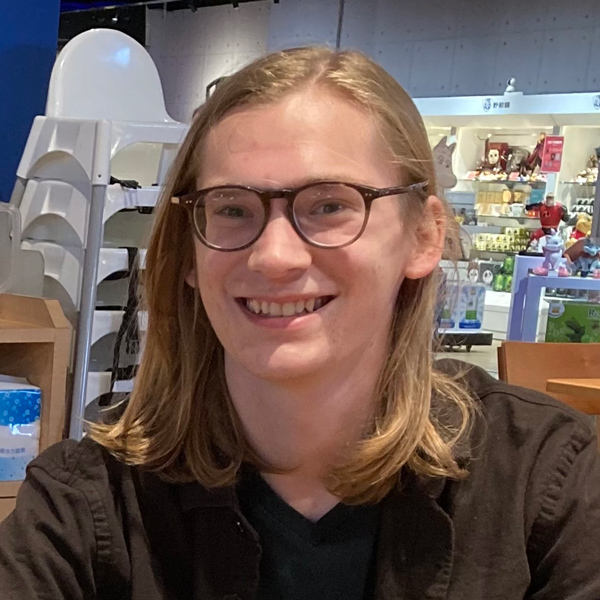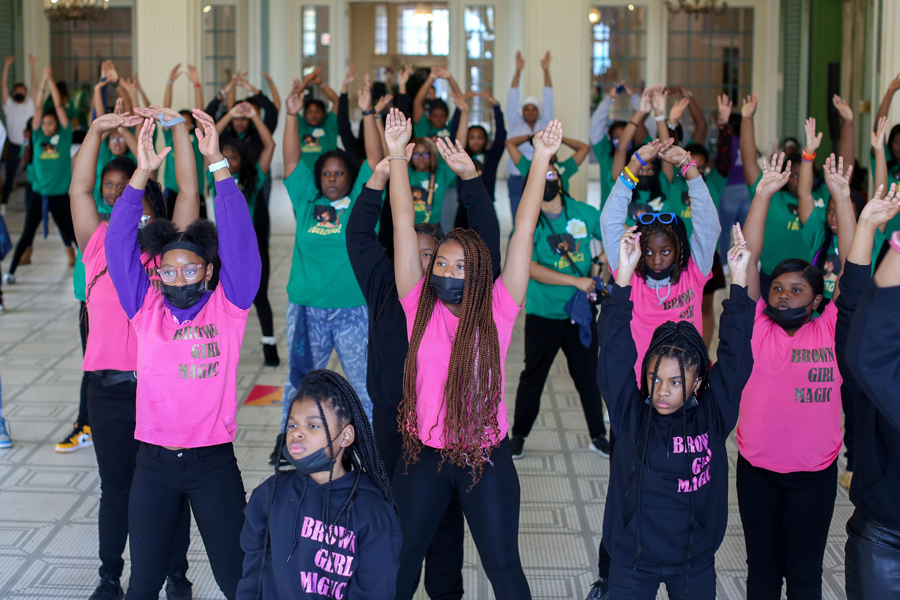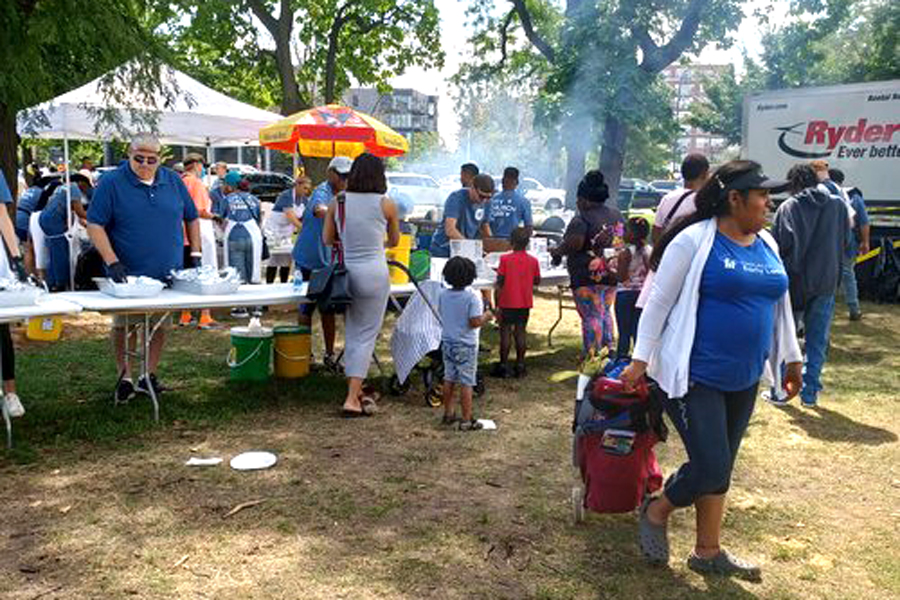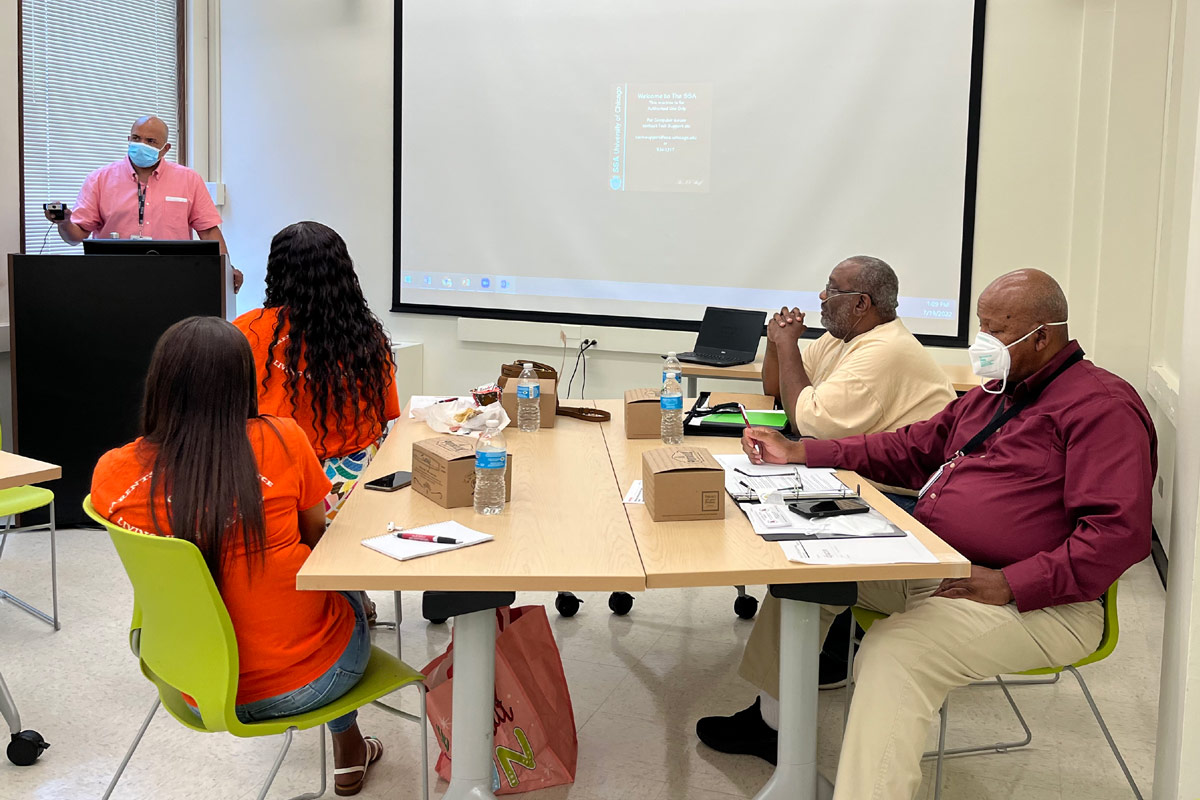On Tuesday, August 23rd, members of the Chicago Peace Fellows’ Mutual Aid Collaborative had an opportunity to meet with Dr. Andrew Papachristos, the Director of the Northwestern Neighborhood & Network Initiative. The meeting was part of the Mutual Aid Collaborative’s Civic Partners Series, which aims to build connections between individuals and organizations that work to build peace and prevent violence.
Dr. Papachristos’s research centers around how the science of social networks can be used to understand and predict who is at the highest risk of becoming a victim of gun violence, and Fellows were moved to learn about ways they might be able to meaningfully act to prevent the spread of violence.
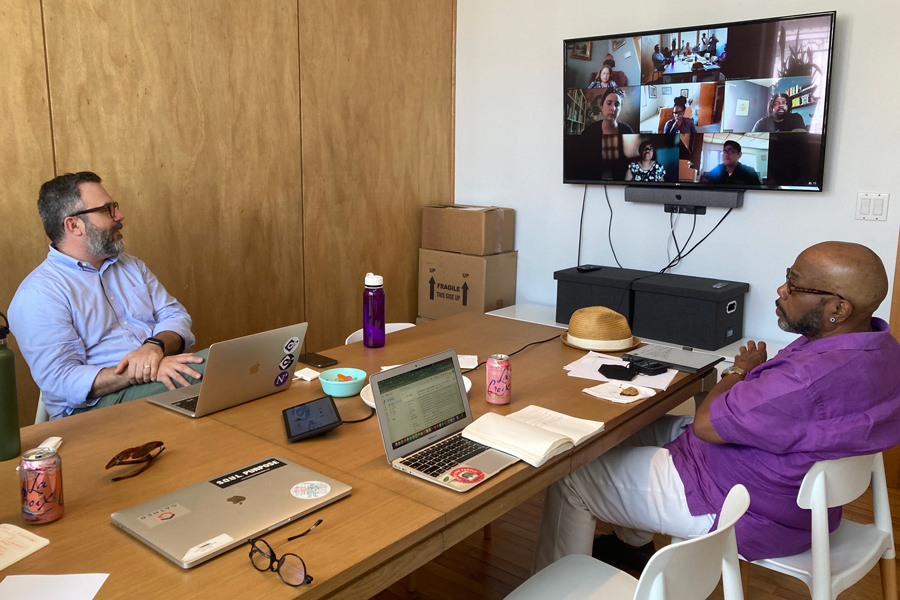
Dr. Papachristos’s research around gun violence provided Fellows with useful insights into how the spread of gun violence can be predicted and preemptively addressed. As he presented his research, he made it clear to the community members watching that gun violence largely spreads through a concentrated segment of the population. In other words, most victims of gun violence know each other or are otherwise connected by only a few degrees of separation.
For instance, one section of his presentation focused on how in major cities across the United States, the majority of gun violence injuries affect a small proportion of the overall population. Data collected in Chicago between 2012-2016, showed that more than 70% of all subjects of gun violence could be located within social networks containing less than 5% of the city’s population, with 89% of those shootings contained within a singular network. This insight is particularly pertinent to community activists and local organizations because it allows them to concentrate their efforts in violence prevention on some of the most vulnerable members of the community.
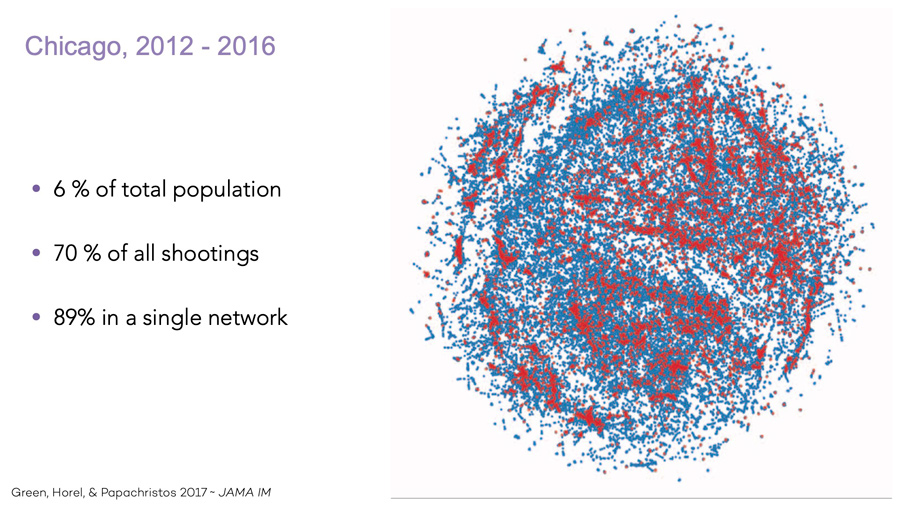
The social networks that Dr. Papachristos studies show that people who are affected by gun violence often share close social ties that have lasting consequences. When members of these networks are exposed to gun violence it has lasting consequences, affecting not only factors of their personal health, such as stress, sleep, and heart health, but also their own risk of being shot. While the probability of being shot is considerably higher for Black and Hispanic men in Chicago, the likelihood of becoming a victim rises exponentially when those men are connected to a social network in which violence had previously occurred. Dr. Papachristos noted a Black or Hispanic man between the ages of 14-24 within one of these networks, had a higher chance of getting shot than someone playing a game of Russian Roulette, or a greater than one in six chance. These figures helped frame the importance of understanding how social networks operate to the Fellows and how they can be utilized to reacg members of the population that are most likely to become victims of violence.

Dr. Papachristos’s research also illustrated that violence is contagious, and that interrupting a potential shooting could have a cascading effect, preventing further violence. He showed how network science can be used to track chains of shootings within a social network. In Chicago, around 63% of shootings studied can be placed within these chains of violence, with an average of 83-120 days between each instance. Each of the moments that occur between these instances represent an opportunity for intervention, when victim services, trauma response teams, or outreach services could coordinate efforts to stop the further spread of violence. When the number of responders is limited, this information is especially useful in making sure they are spending their time in the most effective way.

As the Mutual Aid Collaborative network entered discussion with Dr. Papachristos, many of them were interested in the root causes of violence which end up having a cascading effect. Some Fellows asked him to consider the importance of poverty abatement, after school programs, and jobs programs in preventing future violence. Together, they spoke to the importance of taking the time to understand root causes, while simultaneously taking an immediate response to gun violence. For instance, Dr. Papachristos asked Fellows to consider that the average age of a victim of gun violence in Chicago is 27 years old. Focusing on a root issue such as schooling and primary education would not be doing much for the 27 year old who is already tied to a network in which gun violence had previously occurred. While it is important to address systemic issues such as poverty and education, solutions take time to implement and largely work to benefit future generations, whereas immediate attention is also needed to prevent violence.
The conversation between Dr. Papachristos and the Mutual Aid Collaborative network also touched on the importance of narrative when framing incidents of gun violence. Peace Fellows told powerful anecdotes about the work they do in their communities around gun violence and its impact on individual people. For instance, Lisa Daniels, a 2019 Chicago Peace Fellow, spoke to the importance of rewriting the narrative about “offenders” in incidents of gun violence so that they have the capacity to understand themselves as victims prior to their offense, rather than as intrinsically violent people. What she claimed is important in conversations about trauma and healing is that we “remind the individual that they are not the worst thing they have ever done” and consider the “stories victims tell themselves about who they are and what they’ve experienced.” Dr. Papachristos expressed that he tries to capture a similar sentiment in his presentations, referring only to “victims” of gun violence:
“Nothing else should matter when you’re trying to save a life.”
The conversation between Dr. Papachristos and the Mutual Aid Collaborative network linked rigorous empirical research into the structure of gun violence with lived experiences working in violence prevention. As community leaders reflected on the data Dr. Papachristos shared and its implications, they also envisioned its potential uses in their own violence prevention projects. A recurring theme throughout the presentation was that there is not a unilateral solution to the epidemic of gun violence, but that different people find different solutions which lift them and members of their communities outside of the cycle of violence. This insight stresses the importance of collaborative action amongst community activists, which the Mutual Aid Collaborative aims to facilitate. When individuals caught within networks of violence have a diversity of needs, it is critical that a range of resources are available to them through the creation of grassroots partnerships.
